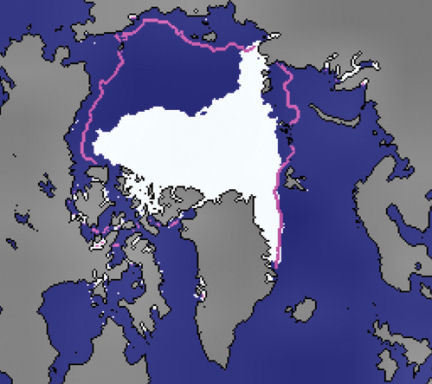- More than 2 years ago
The area of the Arctic Ocean covered by ice fell to a modern low this year, breaking all records kept since satellites began monitoring the poles almost 30 years ago.

Some Arctic sea ice always melts in summer, generally reaching its lowest level in September before it refreezes with the coming of winter. Analyzing satellite data, scientists with the National Snow and Ice Data Center at the University of Colorado in Boulder declared the new record on Sept. 16. By that date, the Arctic ice had shrunk to just 4.13 million square kilometers, which is some 1.19 million km2 lower than the prior record, set in 2005. Compared with the old record, 2007’s summer-ice coverage lost an area “about the size of Texas and California combined,” says team member Mark Serreze. “This year didn’t just beat the old record, it completely shattered it,” he adds.
While computer models generally predict continuing declines in Arctic-summer ice, Serreze says that the new data suggest that “we are about 30 years ahead of projections right now.” Existing models might underestimate how much heat the ice absorbs from the sun and how much heat flows into the Arctic from Northern Hemisphere oceans.
The loss of ice “is simply too strong and persistent to be dismissed as part of a natural cycle of variability,” Serreze says. “It’s inescapable that we’re now seeing the effects of greenhouse warming.”






